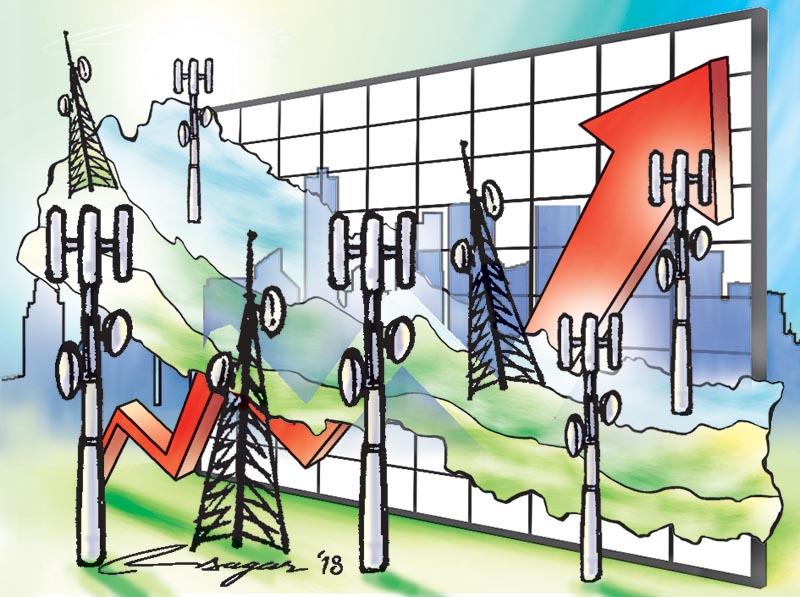Provision on faulty telecom service yet to be implemented
Kathmandu, April 22
Though it has been almost two years that the Nepal Telecommunications Authority (NTA) introduced a legal provision requiring telecom operators to compensate their customers for call drops, telecom firms are yet to comply with this law. Meanwhile NTA, which is also the telecommunication sector regulator, does not seem to be doing much to implement the concerned provision.
Following frequent complaints regarding call drops, which refers to the cut off in phone connections before users themselves hang up within and among different telecommunication networks, NTA had introduced the Telecom Quality Service Bylaw in July 2017 that requires telecommunication firms to compensate customers for such faulty services.
The bylaw states that telecom operators cannot charge customers for the last pulse duration of mobile calls if the phone call is dropped due to poor network of the telecom service provider and that customers should be reimbursed for such defects.
However, NTA has given less priority to implement the compensatory provision in the telecommunication sector following objection from telecom firms. On the other hand, call drops are still a frequent phenomenon among different telecommunication networks.
Telecom companies had expressed their objection to compensate call drops primarily citing that call drops or other quality defects during phone calls are not solely due to bad network of the service provider.
Prativa Baidhya, spokesperson for Nepal Telecom, said that quality of mobile sets is the primary reason for call drop. “Poor quality mobile phone sets have weak signal receiving and transmitting capacity. Similarly, call drop is also determined by the quality of other mobile networks where phone call is being made,” informed Baidhya, adding that telecom companies cannot solely take the responsibility of call drops and start compensating customers for it.
Nevertheless, telecom firms have said that the ‘call drop’ problem has escalated, especially after the earthquake, as service providers are facing difficulty in installing BTS towers at appropriate places to ensure smooth network.
“BTS towers are installed scientifically in places where it is appropriate and necessary. However, people are reluctant to allow service providers to instal such towers on their roofs after the earthquake,” she said, adding inability of telecom firms to instal BTS towers in necessary areas will certainly affect network coverage and signal transmission.
Telecom firms have already informed NTA about these challenges in addressing the call drop problem and compensating customers. However, NTA is yet to address the concerns raised by telecom operators.
“Concerns raised by service providers seem logical. NTA is looking into how to address them and ensure that the call drop problem is reduced,” informed NTA Spokesperson Min Prasad Aryal.






